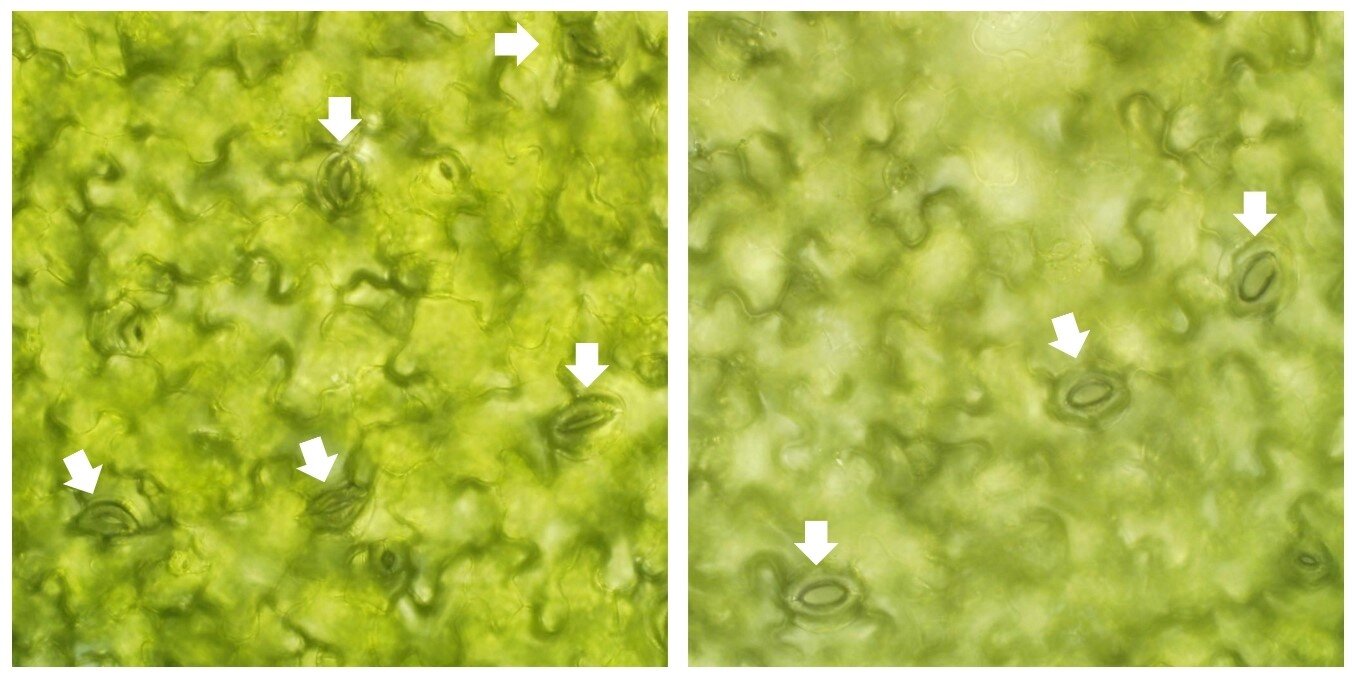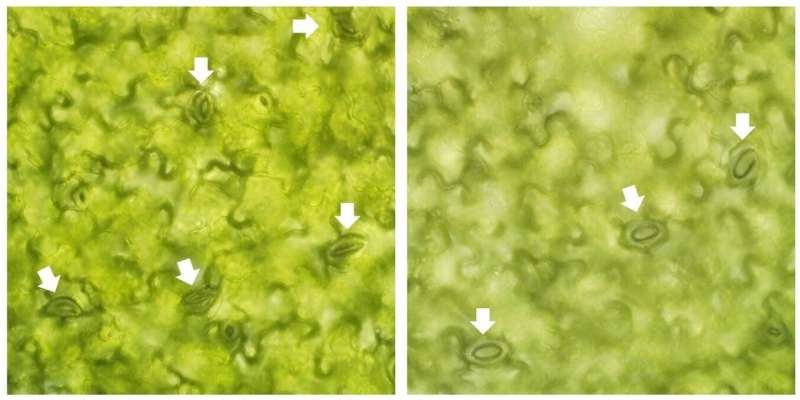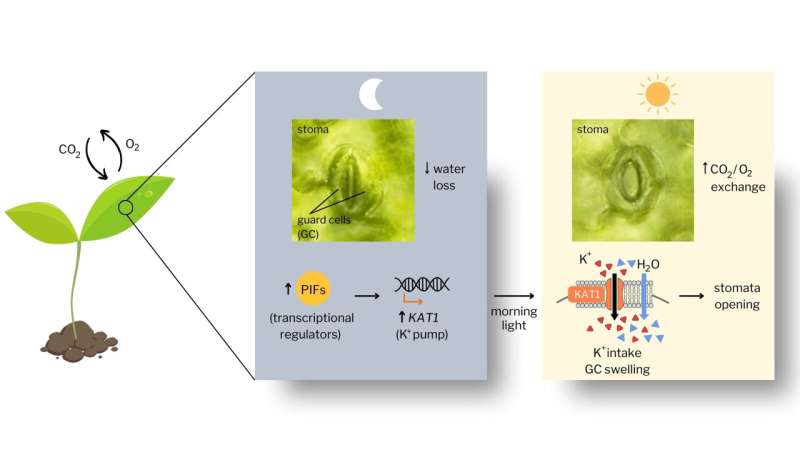

In a study published in Nature Communications, researchers have deciphered the molecular mechanism that regulates the rhythmic movements of stomata throughout the day.
Stomata consist of two paired guard cells (GC) and the pore between them, the size of which depends on the swelling or shrinking of the cells, hence increasing or decreasing the stomatal aperture. Optimal stomatal apertures are determined by the integration of different environmental and internal factors.
In general, closing occurs in the dark and under water stress in response to the stress hormone ABA (abscisic acid) to prevent water loss, whereas light induces stomata opening to allow CO2 uptake and O2 release during the day.
To fully understand the mechanisms controlling stomatal movements, Center for Research in Agricultural Genomics researchers led by Elena Monte studied the model plant Arabidopsis thaliana in periods of controlled light and dark to monitor stomata aperture and to identify the proteins and genes involved, using molecular biology methods as well as bioinformatics analyses.
Researchers found that a family of proteins named PIFs (Phytochrome Interacting Factors) accumulate at the end of the night period, and that this is a crucial step to induce stomata opening in the morning.
PIFs are transcription factors that control the expression of certain genes and, in this case, researchers determined that accumulation of PIFs triggers the expression of KAT1 gene, a guard cell-specific potassium (K+) channel that controls the amount of ions and, hence, the amount of water entering these cells. In the morning, the presence of light activates KAT1 protein, triggering the intake of potassium ions and the swelling of guard cells, therefore causing stomata to open.
Nil Veciana and Arnau Rovira, co-first authors of the work, highlight the importance of the findings in an experimental set-up “with no water restrictions and, thus, endogenous ABA levels,” conditions in which there is rhythmic stomata aperture and the regulatory response to dark/light cycles can be evaluated.

Actually, this interplay between PIF function and endogenous ABA signaling in the guard cells is key for the dynamic regulation of stomata. During the night, endogenous ABA is necessary to keep stomata closed, while in the morning, a reduction in ABA is necessary for light-induced and PIF-regulated stomata opening.
Although stomata were known to have rhythmic movements and the proteins responsible for opening-closing were already known, this is the first time that the exact transcriptional mechanism regulating stomata aperture during day/night has been elucidated. Moreover, the identification of PIF and KAT1 as essential players in this regulation opens up the possibility for new research avenues and possible biotechnology approaches.
Understanding how the light/dark cycle regulates stomatal aperture could be used to identify targets to optimize plant yield and plant adaptation to different stressors, for example in a water restrictive environment and drought conditions.
More information:
Arnau Rovira et al, PIF transcriptional regulators are required for rhythmic stomatal movements, Nature Communications (2024). DOI: 10.1038/s41467-024-48669-4
Provided by
Center for Research in Agricultural Genomics (CRAG)
Citation:
Understanding plant breathing: Study identifies the key protein interplay behind rhythmic stomatal movements (2024, May 29)
retrieved 29 May 2024
from https://phys.org/news/2024-05-key-protein-interplay-rhythmic-stomatal.html
This document is subject to copyright. Apart from any fair dealing for the purpose of private study or research, no
part may be reproduced without the written permission. The content is provided for information purposes only.

